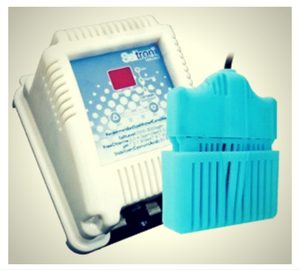 My previous post was on spa maintenance, so I thought it fitting that we take that one step further and discuss salt water chlorinators.
My previous post was on spa maintenance, so I thought it fitting that we take that one step further and discuss salt water chlorinators.
A salt water chlorinator (also known as a chlorine generator) produces chlorine from salty water. This is done through a chemical process known as electrolysis. Salt water chlorinators have what is known as a chlorinator cell which is a unit consisting of parallel titanium plates coated with ruthenium. The unit will produce hypochlorous acid and sodium hypochlorite from dissolved salt in the water. These two chemicals are the cleaning agents used in most swimming pools and spas.
The salt that is dissolved in the water is very similar to ordinary table salt. Chlorine generators require that a certain level of salt in the water be maintained (please refer to the manufacturer’s guidelines for salt levels required). Most chlorine generators these days have an indicator to let you know if low salt levels are present. If the salt levels are low, simply add more salt which can be easily purchased from your local pool or hardware shop.
A salt water system is a self-sustaining system which is one big advantage. The salt in the water is not actually consumed by the electrolysis process, it is split and then reformed. So under normal conditions, you should not have to add more salt to the water; only if you add large quantities of water or you replace the water in your spa should you need to add more salt.
There are many different types of salt water chlorinators on the market and for spas and hot tubs most people elect for the portable type as it can simply be draped over the side of the spa. The portable chlorinator can then be disconnected and removed when you’re using the spa.
In addition, installation of portable chlorinators is very easy. Simply find somewhere close by to mount the control unit, and then drape the cell over the side of the spa, making sure it is fully submerged.
Other types of units include units that are permanently fitted; installation involves fitting the cell unit to the existing pump pipework. The advantage of these types of units is that even though installation is a little bit harder, they are typically installed somewhere out of site and don’t need to be removed when using the spa.
The upfront cost of a chlorinator can be high, however, you save money in the long term by not having to continually buy and add chlorine to the water. You will no longer have the chlorine smell, the water will be crystal clear and clean all the time. Most importantly, no more red eyes!
